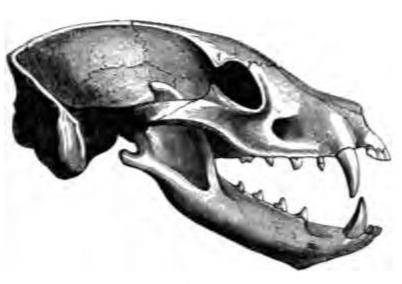|
Sylvia Hortensis
The western Orphean warbler (''Curruca hortensis'') is a typical warbler of the genus ''Curruca''. This species occurs in summer around the Mediterranean, through western Europe and extending into northwest Africa. It is bird migration, migratory, wintering in Sub-Saharan Africa. It is a rare vagrant to northern and north-western Europe. Taxonomy and etymology The English name refers to the Greek mythology, mythical musician and singer wikt:Orpheus, Orpheus. The specific ''hortensis'' is Latin for "of a garden", from ''hortus'', "garden". Two subspecies are unequivocally accepted,Snow, David W.; Perrins, Christopher M.; Doherty, Paul & Cramp, Stanley (1998). ''The complete birds of the western Palaearctic on CD-ROM''. Oxford University Press. . but they are now usually considered separate species.Helbig, A. J. (2001). Phylogeny and biogeography of the genus ''Sylvia'', in: Shirihai, Hadoram: ''Sylvia warblers'': 24-29. Princeton University Press, Princeton, N.J. Jønsson, Knud A. ... [...More Info...] [...Related Items...] OR: [Wikipedia] [Google] [Baidu] |
Johann Friedrich Gmelin
Johann Friedrich Gmelin (8 August 1748 – 1 November 1804) was a German natural history, naturalist, chemist, botanist, entomologist, herpetologist, and malacologist. Education Johann Friedrich Gmelin was born as the eldest son of Philipp Friedrich Gmelin in 1748 in Tübingen. He studied medicine under his father at University of Tübingen and graduated with a Master's degree in 1768, with a thesis entitled: ', defended under the presidency of Ferdinand Christoph Oetinger, whom he thanks with the words '. Career In 1769, Gmelin became an adjunct professor of medicine at University of Tübingen. In 1773, he became professor of philosophy and adjunct professor of medicine at University of Göttingen. He was promoted to full professor of medicine and professor of chemistry, botany, and mineralogy in 1778. He died in 1804 in Göttingen and is buried there in the Albanifriedhof, Albani cemetery with his wife Rosine Louise Gmelin (1755–1828, née Schott). Johann Friedrich Gm ... [...More Info...] [...Related Items...] OR: [Wikipedia] [Google] [Baidu] |
Brown Warbler
The brown parisoma or brown warbler (''Curruca lugens'') is a typical warbler The typical warblers are small birds belonging to the genus ''Sylvia'' in the "Old World warbler" (or sylviid warbler) family Sylviidae.Del Hoyo, J.; Elliot, A., & Christie, D. (editors). (2006). ''Handbook of the Birds of the World''. Volume 1 ... found in eastern Africa. References Curruca Eastern Afromontane endemic bird species Birds described in 1840 {{Sylvioidea-stub ... [...More Info...] [...Related Items...] OR: [Wikipedia] [Google] [Baidu] |
Wintering Birds Of Africa
Winter is the coldest and darkest season of the year in temperate and polar climates. It occurs after autumn and before spring. The tilt of Earth's axis causes seasons; winter occurs when a hemisphere is oriented away from the Sun. Different cultures define different dates as the start of winter, and some use a definition based on weather. When it is winter in the Northern Hemisphere, it is summer in the Southern Hemisphere, and vice versa. Winter typically brings precipitation that, depending on a region's climate, is mainly rain or snow. The moment of winter solstice is when the Sun's elevation with respect to the North or South Pole is at its most negative value; that is, the Sun is at its farthest below the horizon as measured from the pole. The day on which this occurs has the shortest day and the longest night, with day length increasing and night length decreasing as the season progresses after the solstice. The earliest sunset and latest sunrise dates outside th ... [...More Info...] [...Related Items...] OR: [Wikipedia] [Google] [Baidu] |
Birds Of North Africa
Birds are a group of warm-blooded vertebrates constituting the class (biology), class Aves (), characterised by feathers, toothless beaked jaws, the Oviparity, laying of Eggshell, hard-shelled eggs, a high Metabolism, metabolic rate, a four-chambered heart, and a strong yet lightweight Bird skeleton, skeleton. Birds live worldwide and range in size from the bee hummingbird to the common ostrich. There are over 11,000 living species and they are split into 44 Order (biology), orders. More than half are passerine or "perching" birds. Birds have Bird wing, wings whose development varies according to species; the only known groups without wings are the extinct moa and elephant birds. Wings, which are modified forelimbs, gave birds the ability to fly, although further evolution has led to the Flightless bird, loss of flight in some birds, including ratites, penguins, and diverse endemism, endemic island species. The digestive and respiratory systems of birds are also uniquely a ... [...More Info...] [...Related Items...] OR: [Wikipedia] [Google] [Baidu] |
Curruca
''Curruca'' is a genus of Sylviid warblers, best represented in Europe, Africa, and Asia. All of these species were formerly placed in the genus '' Sylvia''. Taxonomy The genus ''Curruca'' was introduced by the German naturalist Johann Matthäus Bechstein in 1802. The type species (by tautonomy) is the lesser whitethroat ''Curruca curruca''. The name ''Curruca'' is the Latin word for an unidentified small bird mentioned by the Roman poet Juvenal. The genus was split from '' Sylvia'' in the Howard and Moore Checklist in 2014 after a molecular phylogenetic study published in 2011. The split is now recognised by most modern authorities. Species The genus contains 25 species: * Barred warbler, ''Curruca nisoria'' * Layard's warbler, ''Curruca layardi'' * Banded parisoma, ''Curruca boehmi'' * Chestnut-vented warbler, ''Curruca subcoerulea'' * Lesser whitethroat, ''Curruca curruca'' * Brown parisoma, ''Curruca lugens'' * Yemen warbler, ''Curruca buryi'' * Arabian warbler, ''C ... [...More Info...] [...Related Items...] OR: [Wikipedia] [Google] [Baidu] |
Insectivore
file:Common brown robberfly with prey.jpg, A Asilidae, robber fly eating a hoverfly An insectivore is a carnivore, carnivorous animal or plant which eats insects. An alternative term is entomophage, which can also refer to the Entomophagy in humans, human practice of eating insects. The first vertebrate insectivores were amphibians. When they evolved 400 million years ago, the first amphibians were piscivores, with numerous sharp conical teeth, much like a modern crocodile. The same tooth arrangement is however also suited for eating animals with exoskeletons, thus the ability to eat insects can stem from piscivory. At one time, insectivorous mammals were scientific classification, scientifically classified in an order (biology), order called Insectivora. This order is now abandoned, as not all insectivorous mammals are closely related. Most of the Insectivora taxa have been reclassified; those that have not yet been reclassified and found to be truly related to each ... [...More Info...] [...Related Items...] OR: [Wikipedia] [Google] [Baidu] |
Deciduous
In the fields of horticulture and botany, the term deciduous () means "falling off at maturity" and "tending to fall off", in reference to trees and shrubs that seasonally shed Leaf, leaves, usually in the autumn; to the shedding of petals, after flowering; and to the shedding of ripe fruit. The antonym of deciduous in the botanical sense is evergreen. Generally, the term "deciduous" means "the dropping of a part that is no longer needed or useful" and the "falling away after its purpose is finished". In plants, it is the result of natural processes. "Deciduous" has a similar meaning when referring to animal parts, such as deciduous antlers in deer, deciduous teeth (baby teeth) in some mammals (including humans); or decidua, the uterine lining that sheds off after birth. Botany In botany and horticulture, deciduous plants, including trees, shrubs and herbaceous perennials, are those that lose all of their Leaf, leaves for part of the year. This process is called abscission. I ... [...More Info...] [...Related Items...] OR: [Wikipedia] [Google] [Baidu] |
Passerine
A passerine () is any bird of the order Passeriformes (; from Latin 'sparrow' and '-shaped') which includes more than half of all bird species. Sometimes known as perching birds, passerines generally have an anisodactyl arrangement of their toes (three pointing forward and one back), which facilitates perching. With more than 140 families and some 6,500 identified species, Passeriformes is the largest order of birds and one of the most diverse clades of terrestrial vertebrates, representing 60% of birds.Ericson, P.G.P. et al. (2003Evolution, biogeography, and patterns of diversification in passerine birds ''J. Avian Biol'', 34:3–15.Selvatti, A.P. et al. (2015"A Paleogene origin for crown passerines and the diversification of the Oscines in the New World" ''Molecular Phylogenetics and Evolution'', 88:1–15. Passerines are divided into three suborders: New Zealand wrens; Suboscines, primarily found in North and South America; and songbirds. Passerines originated in the ... [...More Info...] [...Related Items...] OR: [Wikipedia] [Google] [Baidu] |
Blackcap
The Eurasian blackcap (''Sylvia atricapilla'') is a bird usually known simply as the blackcap. It is a common and widespread typical warbler. It has mainly olive-grey upperparts and pale grey underparts, and differences across the five subspecies are small. Both sexes have a neat coloured cap to the head, black in the male and reddish-brown in the female. The male's typical song is a rich musical warbling, often ending in a loud high-pitched crescendo, but a simpler song is given in some isolated areas, such as valleys in the Alps. The blackcap's closest relative is the garden warbler, which looks quite different but has a similar song. The blackcap breeds in much of Europe, western Asia and northwestern Africa, and its preferred habitat is mature deciduous woodland. The male holds a territory when breeding, which is defended against garden warblers as well as other blackcaps. The nest is a neat cup, built low in brambles or scrub, and the clutch (eggs), clutch is typically 4� ... [...More Info...] [...Related Items...] OR: [Wikipedia] [Google] [Baidu] |
Cuculus Canorus Bangsi MHNT
''Cuculus'' is a genus of cuckoos which has representatives in most of the Old World, although the greatest diversity is in tropical southern and southeastern Asia. Taxonomy The genus ''Cuculus'' was introduced in 1758 by the Swedish naturalist Carl Linnaeus in the tenth edition of his ''Systema Naturae''. The genus name is the Latin word for "cuckoo". The type species is the common cuckoo (''Cuculus canorus''). Species The genus contains 11 species: * Black cuckoo, ''Cuculus clamosus'' * Red-chested cuckoo, ''Cuculus solitarius'' * Lesser cuckoo, ''Cuculus poliocephalus'' * Sulawesi cuckoo or Sulawesi hawk-cuckoo, ''Cuculus crassirostris'' * Indian cuckoo, ''Cuculus micropterus'' * Madagascar cuckoo, ''Cuculus rochii'' * African cuckoo, ''Cuculus gularis'' * Himalayan cuckoo, ''Cuculus saturatus'' * Oriental cuckoo, ''Cuculus optatus'' (formerly ''horsfieldi'') (split from ''C. saturatus'') * Sunda cuckoo, ''Cuculus lepidus'' (split from ''C. saturatus'') * Common cuckoo, ... [...More Info...] [...Related Items...] OR: [Wikipedia] [Google] [Baidu] |
Sylvia Hortensis MHNT 232 Seriana Algérie
Sylvia may refer to: People *Sylvia (given name) *Sylvia (singer), American country music and country pop singer and songwriter *Sylvia Robinson, American singer, record producer, and record label executive *Sylvia Vrethammar, Swedish singer credited as "Sylvia" in Australia and the UK * Tim Sylvia, American mixed martial arts fighter * Colin Sylvia, Australian football player Places * Mount Sylvia, a former name of Xueshan on Taiwan Island * Mount Sylvia, Queensland, Australia * Sylvia, Kansas, a town in Kansas, United States *Sylvia's Restaurant of Harlem, New York City, New York, United States * Fort Sylvia, now Kapit, Sarawak, Malaysia Art, entertainment, and media Comics * ''Sylvia'' (comic strip), a long-running comic strip by cartoonist Nicole Hollander Films * ''Sylvia'' (1961 film), an Australian television play * ''Sylvia'' (1965 film), an American drama film * ''Sylvia'' (1985 film), a New Zealand film about New Zealand educator Sylvia Ashton-Warner * ''Sylvia'' (1985 ... [...More Info...] [...Related Items...] OR: [Wikipedia] [Google] [Baidu] |





